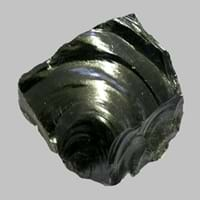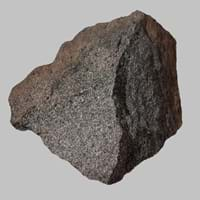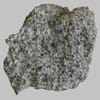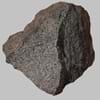Definition
Obsidian is a naturally occurring volcanic glass formed as an extrusive igneous rock. It is produced when felsic lava extruded from a volcano cools rapidly with minimum crystal growth
Boninite is a mafic extrusive rock which is high in magnesium and silica content, formed in fore-arc environments, typically during the early stages of subduction
Discoverer
Obsius
Unknown
Etymology
From Latin obsidianus, misprint of Obsianus (lapis) (stone) of Obsius
From its occurrence in the Izu-Bonin arc south of Japan
Class
Igneous Rocks
Igneous Rocks
Sub-Class
Durable Rock, Medium Hardness Rock
Durable Rock, Hard Rock
Other Categories
Opaque Rock
Fine Grained Rock, Opaque Rock
Texture
Glassy
Aphanitic to Porphyritic
Color
Black, Blue, Brown, Green, Orange, Red, Tan, Yellow
Bluish - Grey, Brown, Colourless, Green, Grey
Durability
Durable
Durable
Scratch Resistant
Yes
Yes
Appearance
Shiny
Dull and Soft
Interior Uses
Decorative Aggregates, Interior Decoration
Decorative Aggregates, Homes, Kitchens
Exterior Uses
Garden Decoration
Garden Decoration, Office Buildings
Other Architectural Uses
Not Yet Used
Not Yet Used
Construction Industry
Arrowheads, Cutting Tool, Knives, Scrapers, Spear Points
As a Flux in the Production of Steel and Pig Iron, As a Sintering Agent in Steel Industry to process Iron Ore, As Dimension Stone, Cement Manufacture, for Road Aggregate, Making natural cement, Manufacture of Magnesium and Dolomite Refractories
Medical Industry
Surgery
Not Yet Used
Antiquity Uses
Artifacts, Jewellery
Artifacts
Commercial Uses
Creating Artwork, Mirror, Used in aquariums
An Oil and Gas Reservoir, Cemetery Markers, Creating Artwork, Soil Conditioner, Source of Magnesia (MgO)
Types
Fireworks Obsidian, Mahogany, Sheen Obsidian, Snowflake obsidian and Velvet Peacock Obsidian
Not Available
Features
Blocks negativity, Helps to protect against depression
Available in Lots of Colors and Patterns, High Mg content, Is one of the oldest rock
Archaeological Significance
Monuments
Not Yet Used
Not Yet Used
Famous Monuments
Not Applicable
Not Applicable
Sculpture
Not Yet Used
Not Yet Used
Famous Sculptures
Not Applicable
Not Applicable
Pictographs
Used
Not Used
Petroglyphs
Used
Not Used
Figurines
Not Yet Used
Not Yet Used
Formation
When the lava is released from volcano, it undergoes a very rapid cooling which freezes the mechanisms of crystallization. The result is a volcanic glass with a uniform smooth texture.
Boninite is a type of Igneous rock which is formed through the cooling and solidification of lava or existing rocks.
Mineral Content
Not Available
Amphibole, Apatite, Biotite, Feldspar, Garnet, Hornblade, Ilmenite
Compound Content
Aluminium Oxide, CaO, Iron(III) Oxide, FeO, Potassium Oxide, MgO, MnO, Sodium Oxide, Phosphorus Pentoxide, Silicon Dioxide, Titanium Dioxide
Silicon Dioxide
Types of Metamorphism
Burial Metamorphism, Cataclastic Metamorphism, Contact Metamorphism
Burial Metamorphism, Cataclastic Metamorphism, Contact Metamorphism, Regional Metamorphism
Types of Weathering
Biological Weathering, Chemical Weathering, Mechanical Weathering
Biological Weathering
Types of Erosion
Chemical Erosion, Coastal Erosion, Glacier Erosion
Chemical Erosion, Coastal Erosion, Wind Erosion
Grain Size
Not Applicable
Fine Grained
Fracture
Conchoidal
Uneven
Porosity
Very Less Porous
Less Porous
Compressive Strength
Not Available
Cleavage
Non-Existent
Not Available
Toughness
Not Available
1.1
Specific Gravity
2.6-2.7
2.5-2.8
Transparency
Translucent
Opaque
Density
2.6 g/cm3
Not Available
Specific Heat Capacity
Not Available
Resistance
Heat Resistant, Impact Resistant
Heat Resistant, Impact Resistant, Pressure Resistant, Wear Resistant
Deposits in Eastern Continents
Asia
Afghanistan, Indonesia, Japan, Russia
Not Available
Africa
Kenya
South Africa
Europe
Greece, Hungary, Iceland, Italy, Turkey
England, Finland, United Kingdom
Others
Not Yet Found
Antarctica, Greenland
Deposits in Western Continents
North America
Canada, Mexico, USA
USA
South America
Argentina, Chile, Ecuador, Peru
Colombia, Uruguay
Deposits in Oceania Continent
Australia
New Zealand
New Zealand, Western Australia
All about Obsidian and Boninite Properties
Know all about Obsidian and Boninite properties here. All properties of rocks are important as they define the type of rock and its application. Obsidian and Boninite belong to Igneous Rocks.Texture of Obsidian is Glassy whereas that of Boninite is Aphanitic to Porphyritic. Obsidian appears Shiny and Boninite appears Dull and Soft. The luster of Obsidian and Boninite is vitreous. Obsidian is available in black, blue, brown, green, orange, red, tan, yellow colors whereas Boninite is available in bluish - grey, brown, colourless, green, grey colors. The commercial uses of Obsidian are creating artwork, mirror, used in aquariums and that of Boninite are an oil and gas reservoir, cemetery markers, creating artwork, soil conditioner, source of magnesia (mgo).










